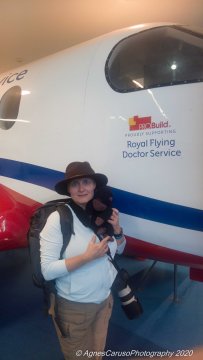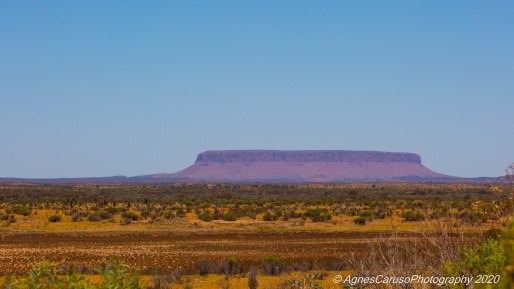
Alice Springs is the heart of Australia. A place I always wanted to visit ever since I traveled with my finger through the World Atlas. I pointed to Alice on the map and asked my father what is the name of this town. Yes, I could not read yet, but that did not stop me from browsing the atlas and dreaming of traveling around the world. When I finally stepped in Alice many years ago it was everything I expected and more.
So why is Alice special? It may have never been there if it was not for the telegraph lane being build from Indonesia via Darwin to South Australia to connect the new colony to Britain and the rest of the world. But this is history and does not explain why the place feels special. As you drive from the airport into town you pass through the Heavitree Gap. A narrow gate like opening in the mountains – the MacDonnell Ranges. The narrow pass includes, the road, railway track and the Todd River. This narrow gap is like a doorway into a different world, you step from the harsh desert outside to a green oasis of town. While the town is not really as much of an oasis as one may think, it is definitely sheltered from the desert. You have now stepped into a different reality, a town like none other.

View of Alice Springs from the Anzac Hill
Alice is surrounded by the MacDonnell Ranges and that limits the winds in the town making the weather this much hotter. If you think the river can cool you down, think again! Todd river bed is  dry most of the year. It only fills occasionally and then it is frequently flowing way too fast for you to enjoy a quick dip. In fact, the Henley-on-Todd Regatta held in Alice is a not exactly what you may think a regatta should look like. It is a dry river regatta, the only one in the world with boats being carried by the participants. And the boats are of all shapes and forms, including bath tubs re-used as boats. Alice Springs is definitely a unique town, culturally diverse and rich in history. It even made its way to pop culture when a movie “The Adventures of Priscilla, Queen of the Desert” was released. It has also been described by Nevil Shute in his book “Town like Alice”.
dry most of the year. It only fills occasionally and then it is frequently flowing way too fast for you to enjoy a quick dip. In fact, the Henley-on-Todd Regatta held in Alice is a not exactly what you may think a regatta should look like. It is a dry river regatta, the only one in the world with boats being carried by the participants. And the boats are of all shapes and forms, including bath tubs re-used as boats. Alice Springs is definitely a unique town, culturally diverse and rich in history. It even made its way to pop culture when a movie “The Adventures of Priscilla, Queen of the Desert” was released. It has also been described by Nevil Shute in his book “Town like Alice”.
History of European settlement started with the building of the telegraph station. At the time the town was called Stuart and became Alice Springs in 1933. An integral part of Alice Springs and the Australian outback is the Royal Flying Doctors Service (RFDS) and School of the Air. While in Alice you can visit the RFDS museum, School of the Air and the Telegraph station, three places of great importance to this region of Australia and the entire outback area.
You also need to realize that Alice is situated nearly in the center of the continent with one road going South to North from Adelaide to Darwin. There is a train which can take you from Adelaide to Darwin – The Ghan. It is definitely an experience to travel across the continent and on the only train route crossing the desert. However, most of the commercial transport nowadays is done by using the road trains. When you leave Alice to drive to Yulara you may see a few of them pass you in the opposite direction.
So now let’s travel a little out of Alice and into the the desert out there. We will visit Uluru, Kata Tjuta and Kings Canyon.
Uluru also known as Ayers Rock is a place you are likely to have seen in images from Australia previously. The big rock monolith in the center of Australia is, however, not the only one. On the way to Yulara you will pass Mt. Ebenezer and Mt Conner. Both are very different in appearance and Mt. Conner is also known as Fool-uru as tourist traveling to see Uluru think that this is the rock.


Uluru climb has been officially closed when we visited the area in October 2019. This ended up the long lasting problem the climb caused for the local Indigenous people, who consider it a sacred site.


There are photography restrictions around the rock aimed at protection of the sacred sites. One of the most interesting things to do around Uluru is the base walk which takes you along most of the rock. As you walk along the base trail in the morning you will witness a sunrise over the desert, amazing light on the rock as sun raises even further. Shapes of the rock are fantastic, there are also many colors visible on some of the rocks. It is an amazing place allowing you to relax but also think about how you connect with nature.




Bushfires are a part of Australian life and we have seen a lot of evidence of recent fires in the area. This was all before the huge bushfires started later in the year. Nature, unlike human settlement and agricultural sites or wildlife recovers pretty quickly. As you can see above a fire burned only along one side of the road.

While Uluru is a single rock, Kata Tjuta or Olgas is a collection of domes with interesting and sometimes strange shapes. There are walking trails leading in between the domes and also along the base of some of them. I like Kata Tjuta more than Uluru, it appears more dramatic and mysterious as you get closer to it.
This trip included a visit to Kings Canyon, a location a bit off the beaten track but extremely interesting due to it geology and very unique appearance. The different types of sandstone created a very unique appearance of the canyon. The colors are highlighted by sunlight as it reaches the bottom of the canyon towards mid-morning.


As our trip is slowly ending with a drive back to Alice, no trip into the Red Center will be complete without a picture of the red sand and the road leading across the desert to Uluru.


If you enjoyed this trip into the heart of Australia, you may also enjoy “The Heart of Australia” photo book I created from this trip. You can also purchase some of the prints from this book from my Pixels website. I hope you enjoyed the trip to the center of Australia.
Not yet sure where I will take you next time, but if you have an idea what you would like to see, leave a comment here or on my Instagram account. See you again in a little bit somewhere around the world!




























